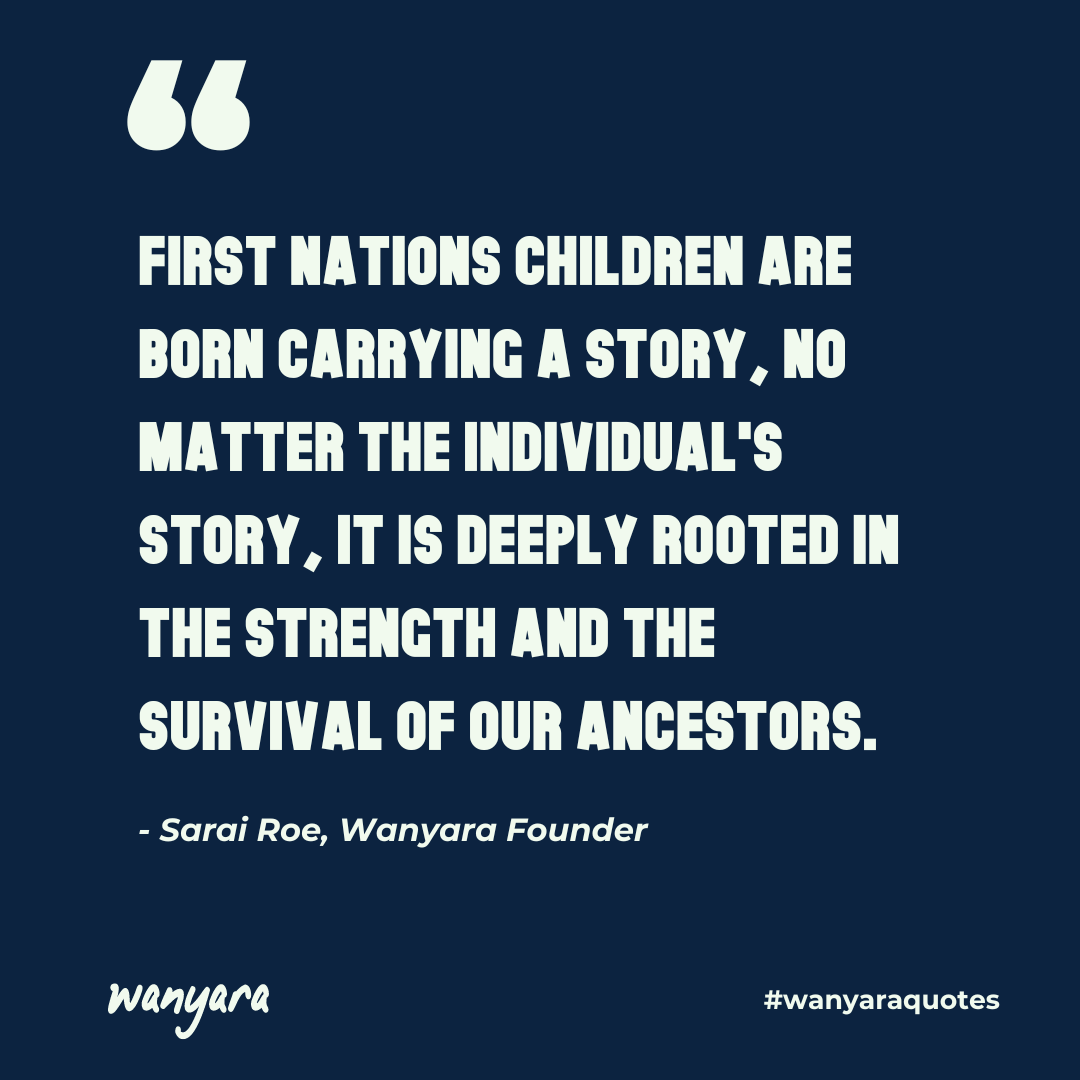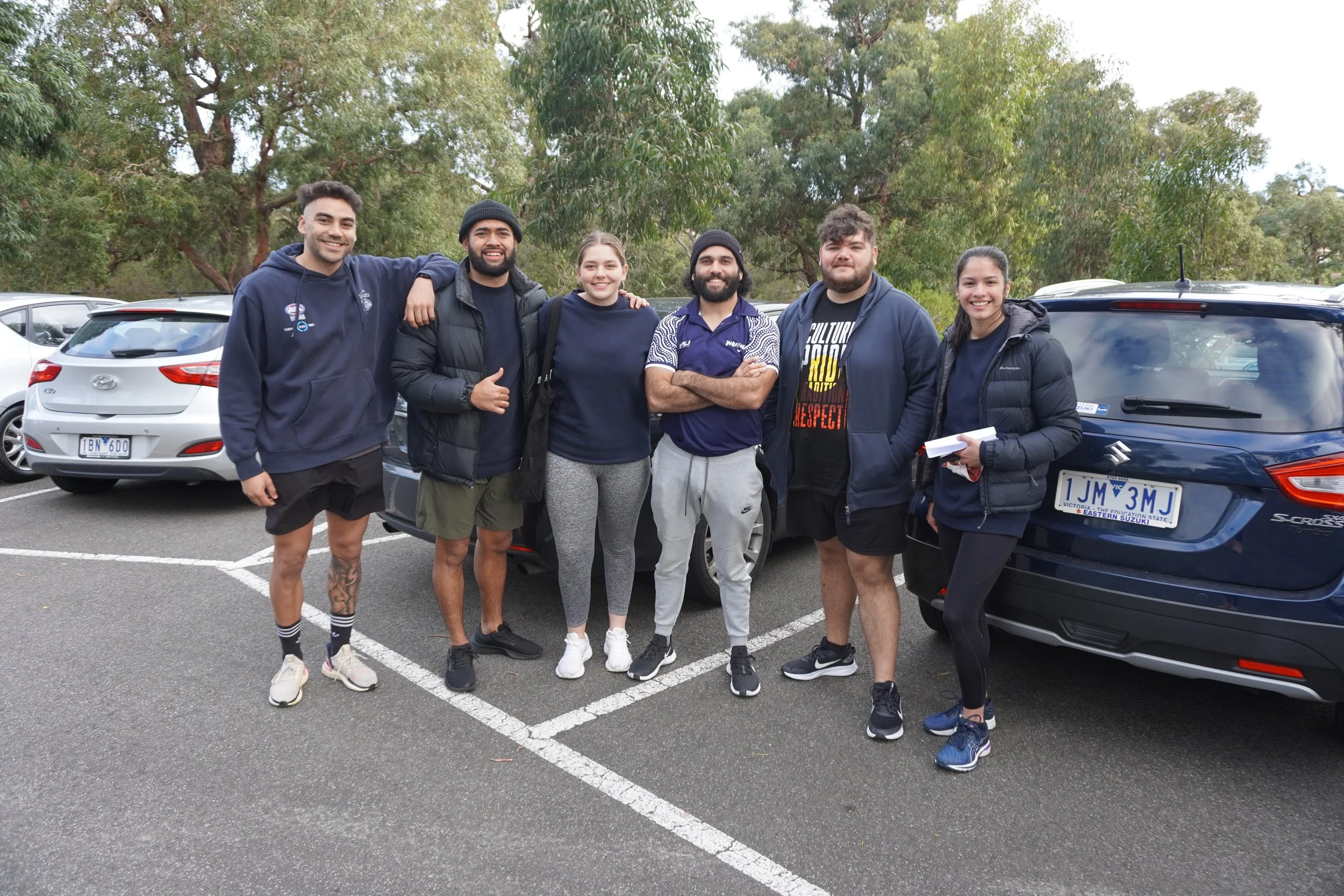Jingella, Te, Yawayi. Hello. We are Wanyara.
When we meet or get together, the first question we ask is:
Where are you from? Who is your mob? Who is your family?
At a deeper level, we are asking:
What connects us? What links are there between us? Where do we speak from?
So in this way, it is appropriate that we start our blog series from this position, to situate each of us and our knowledges, to start mapping our connections and distinctions. These stories about ourselves, our connections to country and family, will be expanded, deepened and others emerge as we yarn in this space. But as a beginning, te, jingella, yawayi, hello!
Sarai Roe
As a proud Yorta Yorta Winyarr, living on unceded Kulin country, I am honored to be the founder and CEO of Wanyara. The work we do in schools is the very thing I missed when growing up in Shepparton. The idea for Wanyara was sparked through a conversation I had with my then 3 year old daughter about her future. When discussing what “future” is with my little girl, I realised that to be sure of the dreams we have for the future, systems in our country need to change. I grew up attending protests and having the pleasure of attending every Yorta Yorta native title court hearing. These key events shaped my thoughts and while they were courageous and had every intention of reshaping Aboriginal futures, I realised that to make real change, we must change the hearts of all Australians. I realised that we need our non-Indigenous counterparts to genuinely embrace our cultures and the countries and their rich histories. I had some anxiety about how I could contribute to this, but in true Yorta Yorta spirit, I knew it was absolutely possible, so, one foot in front of the other, we created Wanyara. Wanyara is now a leader in Aboriginal and Torres Strait Islander cultural programs. We have used our platform to educate thousands of school students, university students, teachers, businesses and government organisations. I look forward to a future where my children and all First Nations children are truly embraced, one that we can all smile about.
Paris Mordecai
I am a proud Widjabul Wyabul dubay (woman) of Lismore, Bundjalung country. I am descended from the Kapeen’s and the ancestral lines of King Jack Kapeen, my family are the proud Felton mob of North Lismore, and I have family ties across the Northern Rivers. I grew up in Lismore and have returned to country in the last few years after studying on Kulin country in Naarm (Melbourne). I am an educator and facilitator, I have worked with young mob for many years through leadership programs, mentoring opportunities, university camps, and tutoring. And while I may not have a teaching qualification, I come from a long line of teachers, educators, leaders, advocates, and changemakers. I honour this legacy, continuing the work, and championing the knowledges that are forever embedded within country and are etched into the ancestral lines of many of the young mob I engage with, and indeed my own family line. I am grateful to be back close to home and country and doing this work, as my sovereignty is strongest when I am home, and my perspective richer. Being that blak kid in the classroom, hearing untruths about mob and our cultures and histories, being singled out to educate or provide an opinion, creates a burden so early and a bitterness towards the schooling system that allows this. I want to change the education landscape, to drive learning, unlearning and relearning, to lighten the load for the young mob coming through, and empower teachers to embrace the uncomfortable.
Joel Stocks
I am a proud Dunghutti man whose country is located on the Mid-North Coast of NSW in a beautiful town of South West Rocks. I am also a proud descendant of the Pyemmairrenerpairrener people of Palawa (Tasmania). I grew up on Dunghutti country and it is the place where I feel most connected to my people and land. Surrounded by crisp oceans, rich country sides and mountains it is hard not to feel such a strong connection of where I was raised. Living my life out of the ocean constantly, and being surrounded by my country, I developed a strong sense of preserving my culture and land. My ambition is to encourage all mob to be proud of how rich our history is and how lucky we truly are to be Aboriginal. Throughout my early schooling life I was very fortunate to be surrounded by enriching Aboriginal mentors and people that helped my schooling journey through on country learning, dance, and yarning circles, for which I am extremely grateful for. It was not until my time at a city based school in my senior schooling life where I felt the most disconnected from who I was and that connection to the country I longed for. Through reflection of my time at the school, I came to a realisation of the disconnection of land and culture in metropolitan areas. This has become an alarming conception that young Aboriginal people do not have the resources and tools to succeed without the connection to land and culture. It is through this new professional space I find myself in where I can strongly influence young Indigenous people to truly connect back to who they are and collectively rejuvenate our rich history.
Neve Roseman
I was born in suburban Melbourne in 1998 making me a modern millennial Australian. Unfortunately, this also meant that my education experience was hung dry of any true connection to First Nations culture. My history classes left deep gaps and spread misinformation on what was deemed as ‘rightful colonization’. I came to Indigenous Australian culture as an adult, independently from the education system through my own experiences with nature and self study. After personally connecting with culture and learning about the beauty and true history of Australia's rightful custodians, I was blown away by the sheer power within the knowledge and how it made me feel both physically and emotionally. It also left me, along with everyone else, extremely frustrated and angry at the current state of Australia. I became aware, for the first time, of the depth of the trauma and the sheer devastation that lies in all that has been lost, missed, broken and stolen in the past. And so, I was deeply drawn to do something about it. As I now journey into the Indigenous Australian cultural space as a young, white woman, it has become my passion to care for the Country I was born on. To learn what I can and do what I can. To figure out my role and to play my part in this new world we find ourselves in as we now all call Australia home.
We look forward to sharing a yarn with each other and with you all, as part of this collection of thoughts on First Nations education. This is dialogue with the intention of learning and reflection, to bring about connection and destigmatisation. Storytelling has such a critical purpose in our communities, with power for us all to be learners and teachers simultaneously. We are creating new stories and remembering old stories, shaping new strong futures for First Nations learners, communities, and all people of this country.
We are on this journey and we are moving really fast.
Will you come with us & can you keep up?























